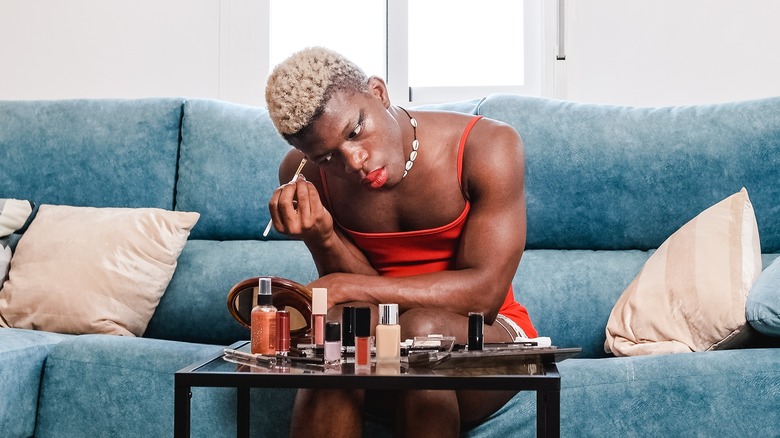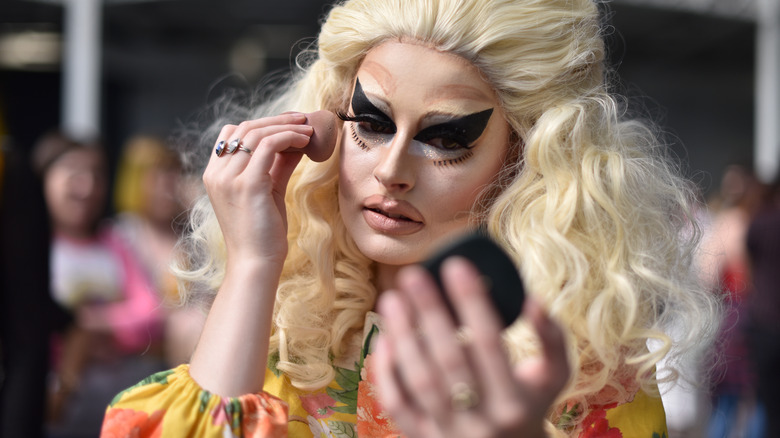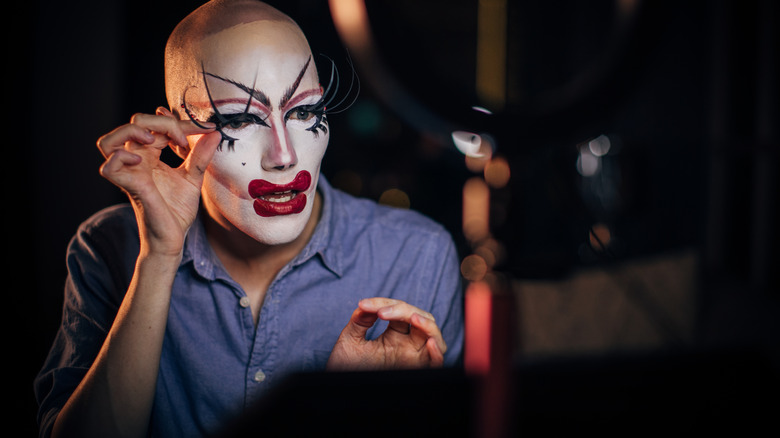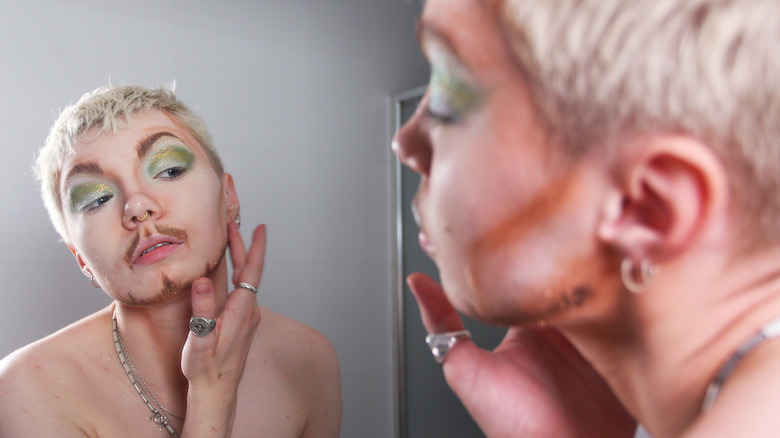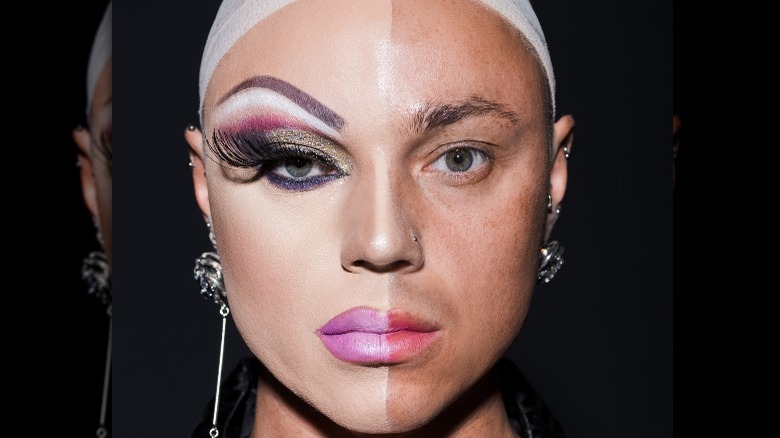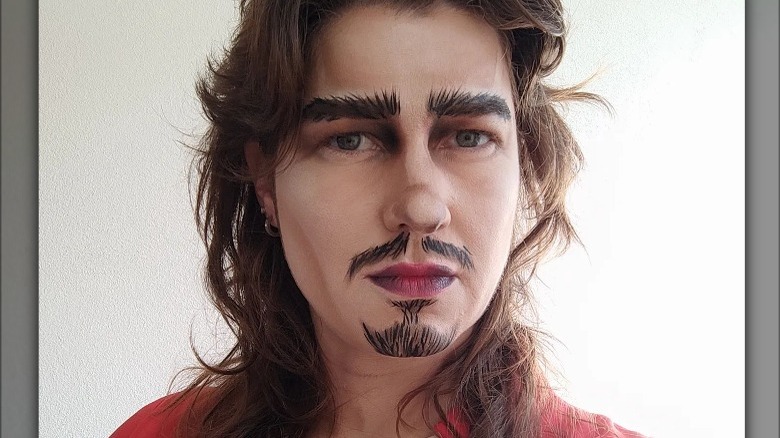How Drag Culture Shaped Modern Beauty Trends (Thank You, Queens & Kings)
The mainstream popularity of shows like "RuPaul's Drag Race" and heavy, shapeshifting makeup like that frequently displayed on Kim Kardashian and her family suggests that drag and beauty culture have always freely shared trends. Once you start digging into history, however, it becomes quite clear that the pipeline has actually always moved primarily in one direction: from drag to mainstream beauty culture. What started as techniques for feminizing or masculinizing faces and making bold makeup visible under stage lighting have become the modern beauty trends we see splashed across Instagram and TikTok.
If your daily makeup routine includes modern trends like shaping your face with contouring and highlighting, thank a drag queen. Or, better yet, take a moment to use this guide to truly understand the ways drag culture has shaped some of the biggest modern beauty trends in existence — often without credit. From sky-high false lashes to intentionally overlined lips, let us count the ways in which drag has contributed to today's beauty scene.
Contour and highlight
If you hit your teen years before the Kardashian era, you probably remember a time when basically no one used makeup to magically reshape their facial structure. In the prehistoric days before the 2010s, most people used the colors and finishes of makeup products to enhance their features rather than to change them. Shimmer, glitter, and thin brows still reigned supreme. There was — of course — one arena in which contouring and highlighting faces into submission had already been the norm for many decades: drag shows.
The art of drag centers around bending the concept of gender. This typically requires changing the appearance of the drag queen or king's facial structure to reflect another gender. Painting on strategic highlights and shadows allows performers to alter the way their jaws, cheekbones, noses, and other features are perceived. In order for these changes to reach an audience from a stage, they had to be exaggerated, which put the technique of face contouring on display for anyone interested in tweaking their own appearance.
False lashes
Long eyelashes have been associated with femininity since the beginning of time. Think of the popular image of a woman "batting her eyelashes" or the many instances when a simple cartoon or drawing is distinguished as female only by the presence of long lashes. Most of society receives these messages from early childhood. It only makes sense, then, that drag queens would adopt dramatic false lashes to create a glamorous hyperfeminine appearance.
While false eyelashes were frequently used on movie starlets in the early 1900s, drag queens made them feel accessible to the everyday woman. Today, it can seem nearly impossible to hunt down a makeup tutorial that doesn't feature falsies. The enhancements have become so mainstream that there are now magnetic varieties that attach to specialty eyeliner available for those who struggle with gluing on traditional versions and semi-permanent lash extensions are considered a staple by many.
Full-coverage complexion products
Drag queens didn't invent makeup, but they've certainly bridged the gap between what's seen on film or onstage and what is considered a mainstream beauty trend. For a drag queen facing hot stage lights, intense physical activity, and five o'clock shadow, the pancake face powders of yesteryear simply weren't going to cut it. Instead, heavy-duty primers, matte-finish full-coverage liquid or cream foundations and concealers, color correctors, and setting powders became the standard. When color-correcting dark stubble with orange or red products, a very heavy, full-coverage foundation and concealer are required.
Once again, the heavy-duty products born out of necessity by drag queens facing environmental and biological pressures have become the mainstream norm. Today, to the abundant full-coverage crowd, leaving the house with a simple coat of powder or sheer foundation as a base is not even imaginable, and finding a makeup tutorial that doesn't feature heavy-duty full-coverage matte complexion products is a challenge.
Bold brows
Brows are essential to bringing shape, definition, and expression to a face. This also makes them the perfect avenue for exaggerating an expression or character. There is a reason why celebrities with bold, high-arched brows like Joan Crawford and Cher are popular choices for drag impersonators. Big, bold, glamorous eyebrows are a sign of a big, bold, glamorous personality. Brows arched up to the heavens also allow more space for elaborate eyeshadow looks to shine.
To achieve a bold, high-arched brow, drag queens often use glue sticks to cover their natural eyebrows and transform them into a substitute for more eyelid space. Before the glue dries, it can be set with loose powder and then covered with foundation and concealer, clearing the way for brand-new brows. The trick is now well-known within the mainstream beauty community and touted as the perfect way to change your appearance for a costume party or to try out '90s skinny brows.
Highly defined lips
If there is a facial feature even more heavily associated with femininity than long fluttering eyelashes, it's full, pouty lips. Large, plump lips are considered an attractive trait, especially for women. This is thought to be tied to the fact that thinning lips in women are associated with aging and the inability to reproduce. Therefore, full lips are a sign of youth and fertility. To create the appearance of large, luscious lips, drag queens often use lip liner to line their lips far beyond their natural perimeters and then fill in the gaps with long-wear lipstick.
Now, any casual perusal of Instagram will display dozens of women who have overlined their lips as part of their everyday makeup routine. Again and again, drag culture has shown women that the option to dramatically alter their appearances with makeup isn't just for movie and theater stars. As RuPaul famously told Oprah in 2018, "We're all born naked and the rest is just drag" (via YouTube).
